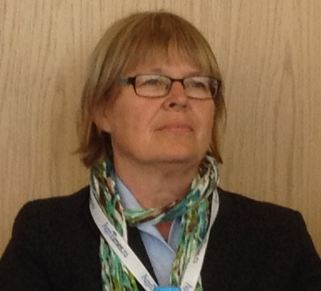



Do We Have An Obligation to Only Milk in Temperate Climates?
ANALYSIS - Temperate climates are a prerequisite for milk production and part of our social responsibility in guiding dairying in the future, according to a global company’s development director.Water availability should inform our selection of land for future dairy expansion, DeLaval’s Dr Charlotte Hallen Sandgren told delegates at the Cow Longevity conference in St Petersburg on Tuesday.
Russia and Northern Europe are therefore ideal places, with Dr Hallen Sandgren, questioning the viability of dairy farms in arid regions such as Saudi Arabia and Israel.
It is here that higher climate temperatures are exaggerated by additional body heat produced by high yielding cows. “Above 8,500 litres and on to the higher yields of 10,000+ we see higher heat stress,” she said.

She added that cow comfort, an essential component in ensuring long and productive cows, can be ensured with cooling machinery but at an additional cost.
As well as climbing production costs, she warned that reproduction rates can halve.
“Firstly, many heat stressed cows don’t show heat or oestrous cycles and secondly, the ones that do, don’t fall pregnant,” she said.
“Even in Russia heat stress is a problem for two months a year and further south in Ukraine it is a major concern.”
Just as importantly, hot cows do not produce as much milk, with Dr Hallen Sandgren adding that a herd can see a five per cent drop in milk yield even at moderate temperatures.
For this reason water availability is vital. She suggested trough space be doubled from 10 cm per cow in temperate regions to 20 cm.
Using data from Israeli farms, she cited a doubling in conception rates after conscious efforts were made to cool cattle.
Admittedly, there were other management changes but she attributed the lift to cooling technologies.
Climate and Forage

Forage expert Thomas Pauly, a senior researcher at the Swedish University of Agricultural Sciences (SLU) told TheDairySite that feed, as well as welfare is shaped by climate and that warmer climates can be the envy of Swedish farmers struggling to grow maize.
“Stockholm is about the northern limit for maize growing, further north is seen as a risk,” he said. “We frequently see farmers start growing maize for a few years before abandoning the idea.”
However, the cooler climate allows Sweden to grow better silage than the Germans, as cooler weather grows grasses with a higher sugar content.
And while Swedish farmers north of the capital struggle to get more than two silage cuts, it does not matter as the best diet is a varied one.
“If you mix silages, cows respond with a higher intake. I have even heard that morning grass silage and afternoon maize can increase dry matter forage intake,” he said.
The Germans benefit from their climate on volume of forage produced. Mr Pauly said growing season duration means German harvests yield more per hectare.
Explaining the effect on a farm’s costs, he said: “More tonnes per hectare mean a passing tractor produces more dry matter with the effect of lowering the cost of fodder production.”
Are Cooling Strategies Worthwhile?
Israeli farmer and published dairy nutritionist Lior Yaron admitted that, while water use on Israeli farms is heavily scrutinised, milking cows in the Middle East is worthwhile as it shortens supply chains and tackles carbon emissions.
However, this is not a reason to compromise cow welfare and he stressed that Israeli farmers pay out for the additional costs of direct cooling strategies.
His message was that cows get heat stressed all over the world, not just nearer the equator, and that Israel had its coping strategies for sustainable production.
This includes feeding waste products and using robotic cleaning to recycle water used in cleaning parlour and yards.
“Cleaning floors and equipment is the main waste of water in dairy farming,” said Mr Yaron. “Cows drink a little more in hot conditions but they pant rather than sweat to cool down.”
“People demand to drink fresh milk in Israel, it makes little economic sense to get a plane or boat to take it from a more temperate region.”
Covering the forage of Israeli cattle, he added: “A lack of pasture means we feed by-products from brewing and the food industry to cattle. We feed a lot of distillers’ dried grains and human food waste products as well.”
Michael Priestley
News Team - Editor
Mainly production and market stories on ruminants sector. Works closely with sustainability consultants at FAI Farms



